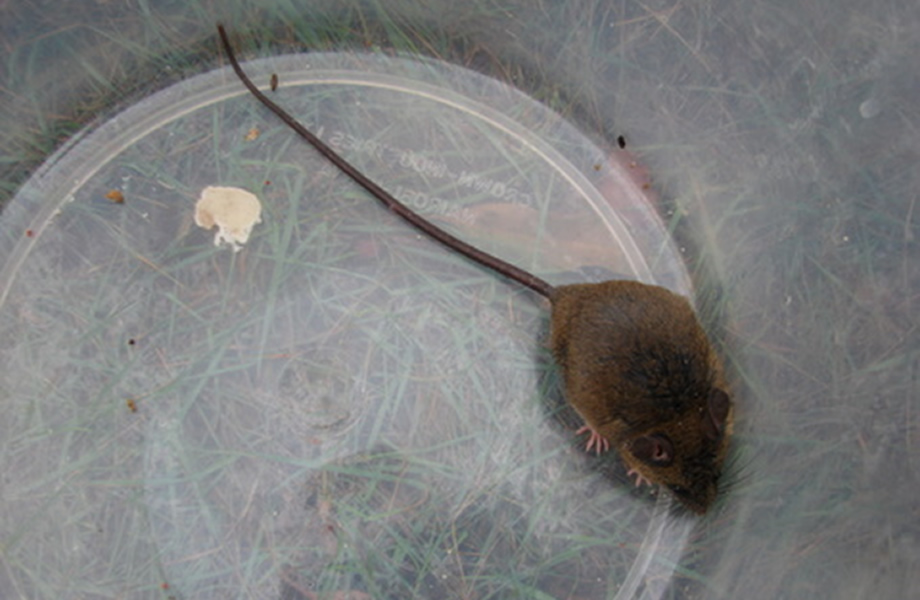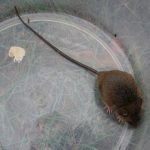Protected areas in SW Uganda include significant populations of several globally threatened animals. While mountain gorillas, elephants and chimpanzees have received a lot of attention, many smaller animals in the region remain poorly known and neglected.
The last few weeks we have been putting together a proposal to address conservation of neglected species with a particular focus on local wetlands. There are quite a number of these animals in the IUCN red list that identifies vulnerable and endangered species: 5 amphibians, 11 small mammals and 4 birds. The list would be longer if we included endangered reptiles, fish and invertebrates. We also excluded several other frogs, mammals and birds about which we know too little to say if they are endangered or not (e.g. Bwindi’s new Boubou bird discovered last year). So our 20 species, though neglected, are not the most neglected animals — we don’t even have names for most of the forest’s insects, spiders and other invertebrates.
The majority of these species specialise on wetland habitats for some or all of their lives. Their persistence depends on maintaining particular wetlands within the wider landscapes they inhabit. These restricted habitats are threatened by a range of factors – both within and outside of protected areas. To safeguard these key locations and their endangered species we need to identify them and ensure that they are managed against both immediate and long-term threats. That is the focus of the proposal we were developing. But neglected species are not easily promoted.
Why have these species been neglected? Well, they are hard to see and don’t have the obvious charisma of the gorillas, chimps and elephants. I suspect that their names are also a problem — how many people are willing to visit the forest to see an animal called a “rat” even if it is the “Montane shaggy rat”, the ” Medium tailed Brush-furred Rat” or “Kemp’s Thicket Rat”? It’d be even harder with snakes and spiders. Not sure how we can change that. At least the birds and frogs are pretty.

Here is our list of the smaller species of immediate conservation concern, scientific name, common name and they the IUCN red list category — limited here to only Vulnerable (VU) and Endangered (EN). All these species have been reported in the region (Bwindi Impenetrable National Park, Mgahinga Gorilla National Park, Echuya Forest Reserve and perhaps in some of the surrounding wetlands). It’d be nice to have pictures for you but (aside from the birds) we dont have any …
Amphibians

- Afrixalus orophilus , Western Rift leaf-folding frog , VU
- Hyperolius castaneus, Ahl’s reed frog , VU
- Hyperolius discodactylus [= H. alticola], none, VU
- Hyperolius frontalis , none, VU
- Phrynobatrachus versicolor, none, VU
Mammals
- Delanymys brooksi, Delany’s swamp mouse, VU
- Lophuromys rahmi, Rahm’s brush-furred rat, EN
- Lophuromys medicaudatus , Medium tailed brush-furred rat, VU
- Praomys degraaffi , De Graaff’s praomys, VU
- Thamnomys kempi [=T. major] , Kemp’s thicket rat, VU
- Crocidura stenocephala, Kahuzi swamp shrew, Narrow-headed shrew, EN
- Crocidura tarella, Tarella or Uganda shrew, EN
- Dasymys montanus, Montane shaggy rat, EN
- Myosorex blarina , Montane mouse shrew, EN
- Ruwenzorisorex suncoides, Ruwenzori shrew, VU
- Sylvisorex lunaris, Moon shrew, VU
Birds
- Bradypterus graueri, Grauer’s swamp/Rush warbler , EN
- Cryptospiza shelleyi, Shelley’s crimson-wing, VU
- Muscicapa lendu [=M. Itombwensis], Chapin’s flycatcher, VU
- Pseudocalyptomena graueri, African green broadbill/Grauer’s broadbill, VU
So what do you think? Should we care about the rats and shrews and the spiders too? Let us know if you have any ideas how the plight of these animals might be better marketed to the World!
Best wishes


